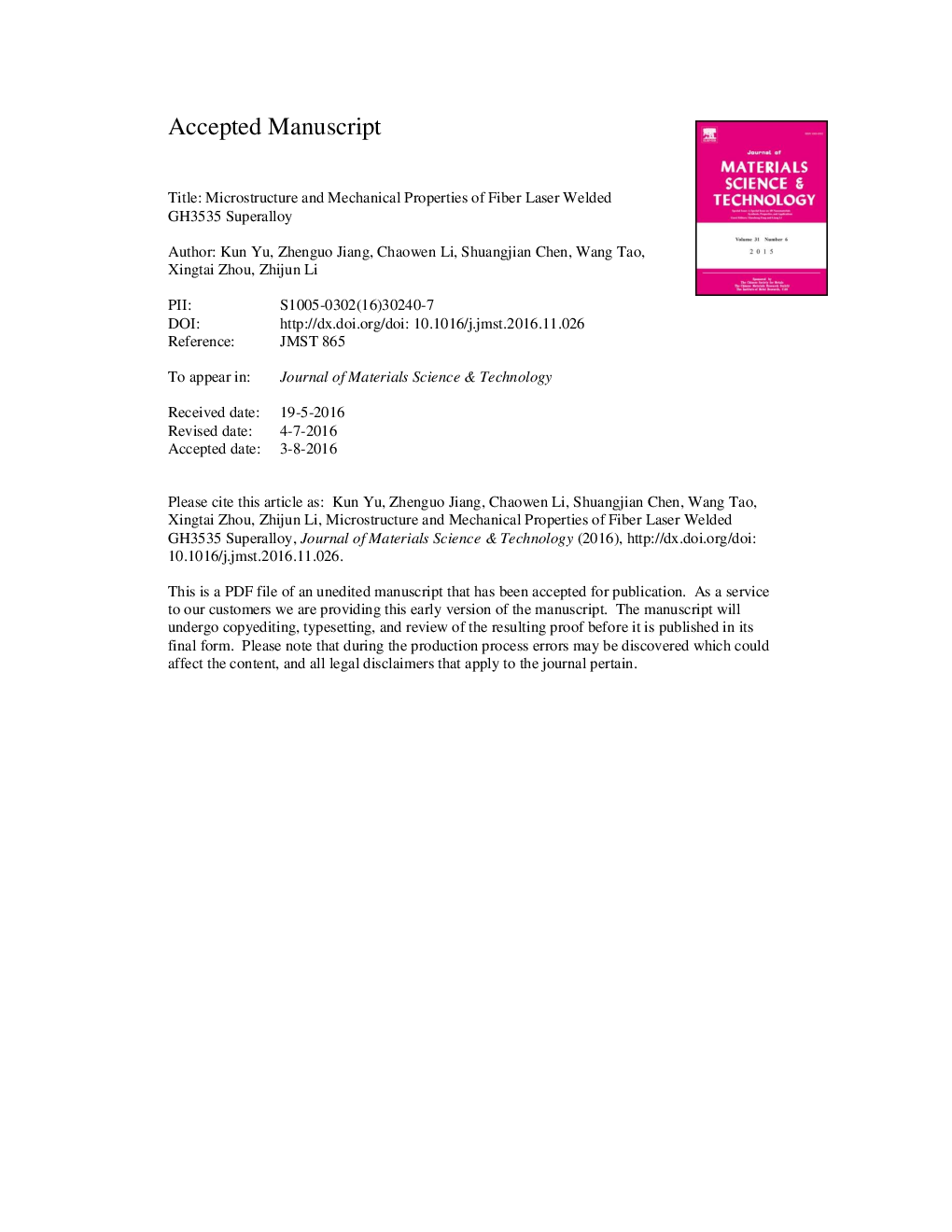| Article ID | Journal | Published Year | Pages | File Type |
|---|---|---|---|---|
| 7952165 | Journal of Materials Science & Technology | 2017 | 27 Pages |
Abstract
As a primary material of the thorium molten salt reactor (TMSR) that is a suitable candidate reactor of the Generation IV nuclear reactors, GH3535 superalloy was successfully welded. The effect of laser beam welding (LBW) on microstructure evolution of fusion zone (FZ) and heat affected zone (HAZ), such as element segregation, precipitate behavior and grain evolution, was investigated. The microhardness and tensile properties were tested and discussed. The results of microstructure evolution showed that a number of fine M6C-γ eutectic phases precipitated at solidification grain boundaries and interdendritic region in FZ. Compared to base metal zone (BMZ), the grain size of HAZ has no obvious change. While a few of M6C-γ eutectic phases were observed in partially melted zone (PMZ) of HAZ. The results of microhardness indicated that the hardness of FZ was higher than that of HAZ and BMZ. The results of tensile test showed that the ultimate tensile strength of joints at room temperature, 650 and 700 °C were 98%, 97% and 99% of that of BM, respectively. All the tensile specimens of joints failed in BMZ rather than in PMZ where M6C carbides had been transformed into M6C-γ eutectic phases.
Related Topics
Physical Sciences and Engineering
Materials Science
Materials Chemistry
Authors
Kun Yu, Zhenguo Jiang, Chaowen Li, Shuangjian Chen, Wang Tao, Xingtai Zhou, Zhijun Li,
